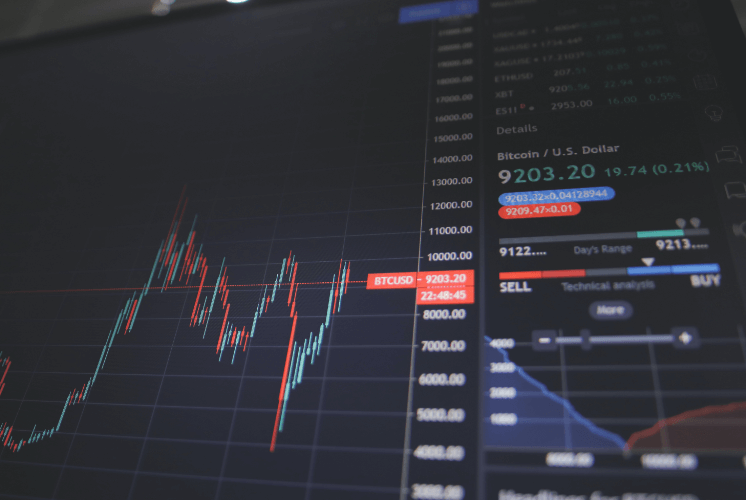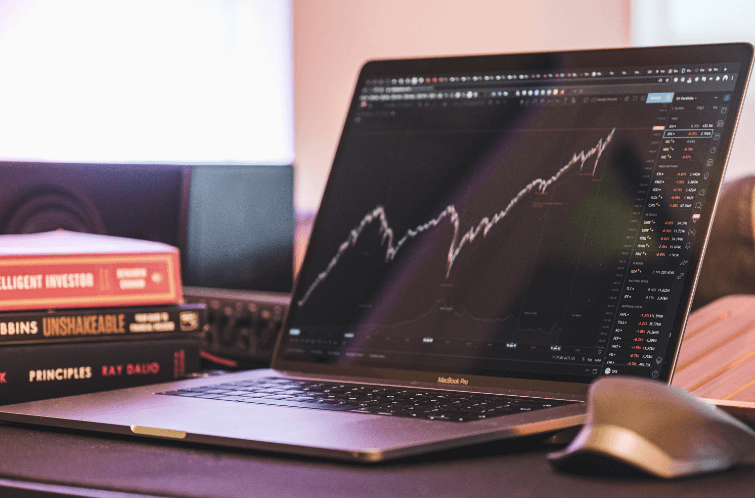Are you curious about how the stock market performs in America? If so, you have probably heard of the Dow Jones Industrial Average. It is a well-known index that measures the performance of 30 blue-chip stocks traded on the New York Stock Exchange (NYSE) and Nasdaq. Understanding how it works can help investors make informed decisions when investing their money. In this blog post, we will decode the Dow Jones Index to explain what it is, how it’s calculated, its historical milestones, limitations, and other important aspects to keep in mind when investing in it.
What Is the Dow Jones Industrial Average?
The Dow Jones Industrial Average, also known as the DJIA or simply the Dow, is one of the most widely followed stock market indices in the world. It was created by Charles Dow in 1896 and consists of 30 large-cap blue-chip companies that are leaders in their respective industries.
These companies include well-known names such as Apple, Coca-Cola, Goldman Sachs, and Johnson & Johnson. The index is calculated based on these stocks’ prices and represents a snapshot of how well these high-performing companies are doing.
Unlike other indices like the S&P 500 which cover a broader range of companies across different sectors, the Dow only includes those representing key economic sectors including technology, healthcare, finance and consumer goods. This makes it an important gauge for investors interested in tracking performance within specific industries.
If you want to keep up with what’s happening with America’s leading corporations then understanding what the DJIA is all about can be incredibly helpful.
How to Calculate the Dow Jones Industrial Average?
The Dow Jones Industrial Average is calculated by taking the sum of the prices of 30 large-cap stocks and dividing it by a divisor. This divisor is adjusted to account for events such as stock splits, mergers, or other changes in company structure that can affect the price.
To calculate the index value, you would add up the current prices of all 30 companies included in the index and then divide that total by the current divisor. The calculation takes into account any adjustments made to ensure continuity between past performance and present time.
It’s important to note that not all stocks are weighted equally in calculating this average. The higher-priced stocks within those 30 chosen companies have greater weight than lower-priced ones.
Changes may be made periodically to adjust which companies are included in this list based on their market capitalization or other factors deemed relevant at any given moment.
Investors use this information to track overall stock market trends over time and make decisions about whether to buy or sell specific stocks based on how they’re performing relative to each other within the Dow Jones Index.
Historical Milestones of the Dow Jones Industrial Average
The Dow Jones Industrial Average has a rich history that dates back to 1896. Over the years, it has witnessed several historical milestones and events that have shaped America’s stock market performance.
One of the first significant milestones was in 1928 when the index expanded from 20 to 30 stocks. This change reflected the growing importance of industrial companies in America’s economy at that time.
Another milestone occurred on October 19, 1987, also known as Black Monday when the Dow dropped by over 22%. This event marked one of the worst single-day losses in history and highlighted how fragile stock markets can be under certain circumstances.
In recent times, another notable moment was reached on January 4th, 2021 when The Dow passed through its all-time high mark of thirty thousand points; this demonstrated a remarkable recovery after an initial sharp decline due to Covid-19 pandemic fears earlier last year.
Moreover, The inclusion of more technology companies like Apple (AAPL) into DJIA is another development. In August last year (2020), Salesforce.com Inc., Amgen Inc., and Honeywell International were added while Exxon Mobil Corp (XOM), Pfizer Inc (PFE), Raytheon Technologies Corporation(RTX) were removed from DOW Jones Industrial Average Index
As we look towards future trends innovation continues with regards to technology upgrades in order for trading algorithms along with forecasting tools such as machine learning models which will likely become standard investment strategies for investors who track DJIA closely.
Dow Jones Industrial Average vs. Other Market Indices
When it comes to comparing stock market indices, the Dow Jones Industrial Average (DJIA) is often pitted against other popular benchmarks such as the S&P 500 and NASDAQ Composite. Each index represents a different set of stocks and has its own unique methodology for calculating performance.
The DJIA consists of just 30 large-cap companies, making it a more exclusive club than the S&P 500’s 500-plus members. This smaller pool makes movements in individual stocks have a larger impact on the overall index compared to broader indices like the S&P.
On the other hand, the NASDAQ Composite is technology-heavy and includes smaller-cap growth companies that are not found in either of the other two indices. This can make its returns more volatile but also offers investors exposure to some of today’s most innovative businesses.
Investors should note that no single benchmark can fully capture or predict overall market performance. It’s important to diversify across multiple asset classes and strategies rather than relying solely on one index or investment product. Ultimately, each investor must determine which benchmark(s) align with their personal investment goals and risk tolerance levels.

Limitations of the Dow Jones Industrial Average
While the Dow Jones Industrial Average (DJIA) is widely used to track America’s stock market performance, it comes with its limitations. One of the major drawbacks is that it only includes 30 large-cap stocks and does not represent the entire market. This means that small-cap or mid-cap companies are left out of the index, which can lead to an incomplete picture of how well the overall market is doing.
Another limitation is that DJIA uses a price-weighted formula instead of a market capitalization-based approach like other indices such as S&P 500 or NASDAQ. This means that higher-priced stocks have more influence on the index than lower-priced ones. For instance, even if one high-priced stock experiences significant gains while others decline, it could skew the DJIA’s performance for that day.
Moreover, DJIA also doesn’t account for dividends paid by companies included in its index; therefore, investors who depend on dividend income may not be able to rely solely on this index for their investment decisions.
Another limitation associated with DJIA is its inability to reflect changes in sectors over time effectively. The economy has changed dramatically since inception in 1896 and will continue evolving at an unprecedented rate into new industries and technologies increasingly. Unfortunately so far no evidence suggests any solid plans for updating or improving upon this strategy anytime soon.
In conclusion , while Dow Jones Industrial Average remains a popular choice among investors globally when it comes to tracking American markets’ performance due to familiarity added advantages associated with historical significance however there are few things one should keep note about limitations mentioned above before making any crucial decision based solely around them
How to Invest in Dow Jones Industrial Average?
Investing in the Dow Jones Industrial Average is relatively straightforward, but there are a few things to keep in mind before jumping in.
One way to invest in the Dow Jones Index is by buying shares of an exchange-traded fund (ETF) that tracks the index’s performance. The most popular ETFs for tracking the Dow Jones Index are SPDR Dow Jones Industrial Average ETF and iShares Dow Jones U.
S. ETF.
Another option is investing in mutual funds that track the index’s performance. These mutual funds have minimum investments required and charge an annual fee on top of their operating expenses.
For investors seeking individual stocks within the index, it’s important to remember that not all companies listed on the DJIA may be profitable or appealing investment opportunities. It’s essential to research each company thoroughly before making any investments.
When investing, it’s crucial to consider market volatility and diversify your portfolio across various asset classes like bonds, equities, commodities or real estate assets outside of US markets for a more balanced strategy.
Investing in DJIA can be rewarding if executed with careful consideration and strategic planning.
The Bottom Line
H2: The Bottom Line
It has been used as a benchmark for measuring the performance of America’s stock market since its inception over a century ago.
It is calculated by adding up the prices of all 30 stocks and dividing it by a divisor that accounts for any changes in those stocks’ values. This formula allows investors to track trends in America’s major industries and make informed investment decisions.
However, it’s important to note that while the Dow Jones Industrial Average can be useful, it also has limitations. For example, it only represents 30 companies out of thousands in the US stock market and doesn’t account for dividends or inflation.
Investing in Dow Jones Industrial Average can be achieved through exchange-traded funds (ETFs) or mutual funds that track this index. These types of investments allow you to own shares across all 30 companies at once without needing to purchase them individually.
Understanding what is dow jones index enables investors to better understand how America’s economy works and make more informed investment decisions based on broad market trends rather than individual stock performances alone.





 From Trade Wars to Pandemic Woes: What’s Behind the Dow Jones Falling?
From Trade Wars to Pandemic Woes: What’s Behind the Dow Jones Falling?